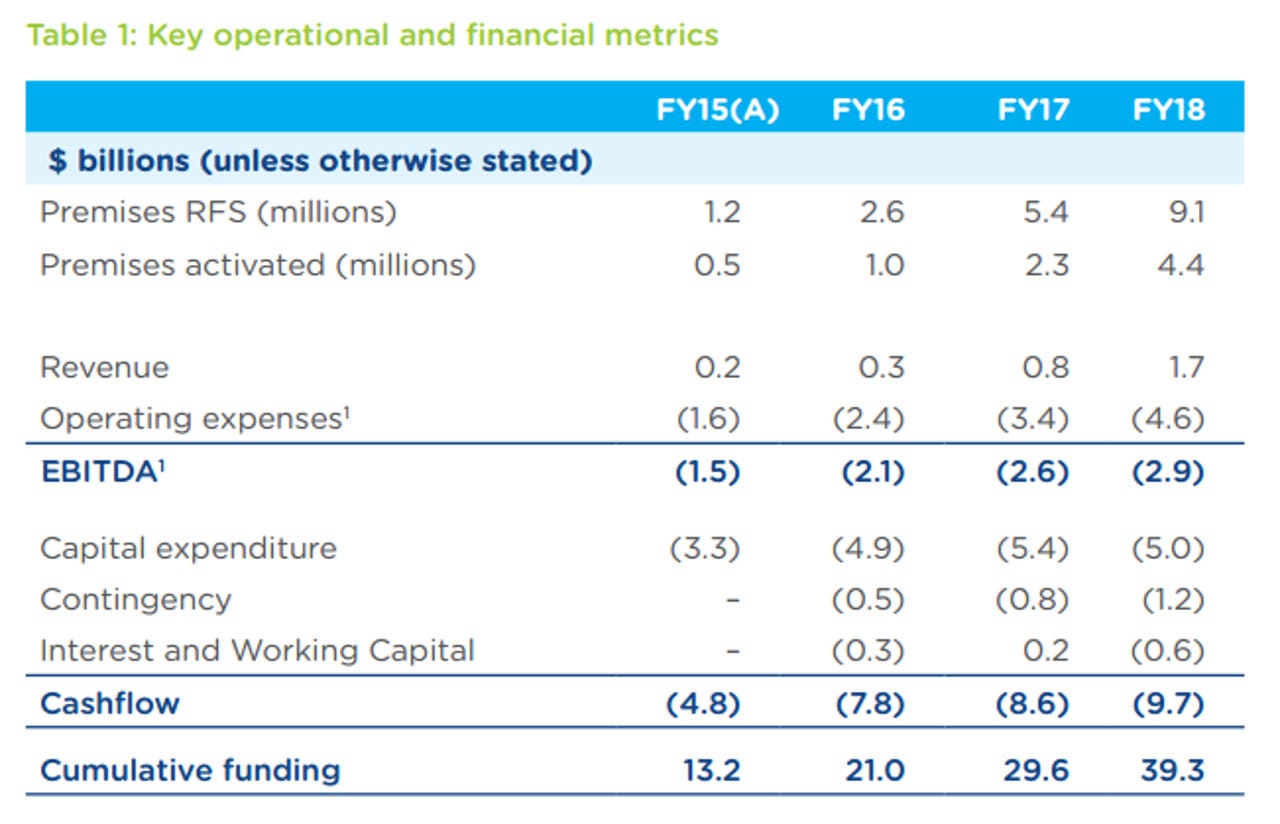NBN doubles revenue and users in AU$1.5bn loss

NBN has posted a loss of AU$1.5 billion, after expenses on the network rose to AU$1.6 billion following workforce expansion and revised contracts to access the networks of Telstra and Optus.
Last year, the company reported an EDITDA loss of AU$1 billion.

Despite the negative overall number, the company responsible for rolling out the National Broadband Network claimed in its full year results today that it has met significant milestones and its full year targets, as well as stating its rollout is gaining momentum.
Over the past twelve months to June 30, NBN has grown revenue to AU$161 million, from AU$60 million last year; the number of premises connected to the network and ready for service jumped to 1.2 million from 553,000; and the number connected services moved from 210,000 to 486,000.
NBN CEO Bill Morrow said the company is set to accelerate its network rollout.
Latest Australian news
"NBN has not only met its targets; it has exceeded them," he said. "These achievements come as a direct result of refinements we have made to the organisation, including improved business processes, the resetting of relations with our delivery partners, and increasing employee morale."
The company also said it would begin activating the first of 200,000 premises connected via fibre-to-the-building this quarter.
Last month, Australian Competition and Consumer Commission granted draft approval for a revised agreement covering the transition of Optus' hybrid fibre-coaxial (HFC) customers onto the fixed-line National Broadband Network, and the progressive integration of parts of the telco's network with the NBN.
NBN took over ownership of the Telstra and Optus copper and hybrid fibre-coaxial networks under revised agreements signed in December 2014.
In October, NBN will launch the first of the its satellites to service the 3 percent of Australians not covered by the NBN fixed or wireless networks from French Guiana. Service to NBN customers is expected to be commercially available in the first half of 2016, with the second satellite scheduled to be launched later next year.
Since 2012, the NBN has had an interim satellite service initially capped at 48,000 customers. After signing 45,000 customers, the company then known as NBN Co ceased taking on new customers on the interim service, amid complaints that speeds were slowing to a crawl as demand far outstripped the available capacity on the service.
According to reports over the weekend, NBN will need to raise more debt to cover the cost of completing its so-called multi-technology mix rollout.
NBN said today that it's received AU$13.2 billion in equity funding at end of financial year 2015, but contributions from the federal government remain capped at AU$29.5 billion.
As announced in this year's federal budget, government funding for the NBN was brought forward, consisting of AU$7.8 billion in the 2015-16 financial year and AU$8.3 billion in the 2016-17 financial year.
The Department of Communications said at the time that AU$2.6 billion of the funding for NBN had been brought forward to "reflect the launch and scale of new network technologies", referring to the shift to the multi-technology mix model, including hybrid fibre-coaxial and fibre to the node.
Update at 12.37pm AEST, August 21: Headline was changed from "NBN doubles revenue and users in AU$1.1bn loss" to reflect the correct size of NBN's loss.